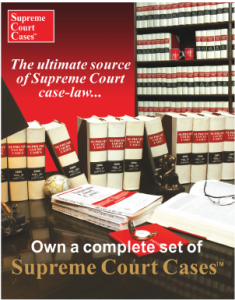
Encroachment is one of the most common and serious problems affecting cities, towns, and even rural areas in India today. It creates traffic jams, reduces public access, causes disputes between neighbours, and ultimately violates the law. But what exactly is encroachment? What is the difference between road encroachment and private encroachment? What does the law say about it? And most importantly, what can you do if you are facing or witnessing it? This blog will answer all of these questions in clear, simple language. Whether you are a concerned citizen, a homeowner, or part of a Residents’ Welfare Association (RWA), this guide is for you.
What is Encroachment?
Encroachment refers to the unauthorised occupation or use of land or property that legally belongs to someone else. This includes public property, private property, or land owned by the government.
In other words, if a person builds on, parks on, or otherwise uses land without having legal ownership, permission, or rights to that land, it is considered encroachment.
Encroachment can be temporary or permanent. It can happen knowingly or unknowingly, but in the eyes of the law, unauthorised use is still illegal.
Types of Encroachment in India
Encroachment generally falls into two broad categories. Understanding the difference is important because the legal process and the responsible authority may differ.
1. Road or Public Encroachment
This type of encroachment occurs when someone illegally uses or blocks public land or government property. Public land is meant for everyone’s use and is typically managed by local authorities such as Municipal Corporations.
Common examples:
- A shopkeeper building a platform or ramp on a footpath
- Vendors setting up stalls on roads or near traffic signals without permission
- Residents placing permanent gates across public streets
- Vehicles parked long-term on pavements or public land
- Construction on drains, service lanes, or green belts
This form of encroachment restricts public access, causes safety hazards, and puts pressure on infrastructure and civic services.
2. Private Encroachment
Private encroachment happens when someone occupies or builds on another person’s private property without their consent.
Common examples:
- A neighbour’s boundary wall crossing into your plot
- Construction of a balcony or terrace that extends over your property
- Use of your driveway or common area without permission
- Builders violating setback rules and extending structures beyond approved limits
This type of encroachment often leads to civil disputes, and in some cases, may also involve police complaints.
Key Differences: Road Encroachment vs Private Encroachment
| Feature | Road/Public Encroachment | Private Encroachment |
|---|---|---|
| Land Ownership | Government or Municipal body | Private individual or housing society |
| Examples | Footpath stalls, illegal ramps, blocked roads | Walls, sheds, overhanging balconies |
| Authority to Act | Municipal Corporation, Local Body | Civil Court, Police, Local Authority |
| Laws Involved | Municipal Acts, IPC, Street Vendors Act | Civil Procedure Code, IPC, Property Laws |
| Relief Mechanism | Complaint to Municipality, Demolition Order | Legal Notice, Civil Suit, Injunction |
Relevant Indian Laws Governing Encroachment
Here are the main laws that deal with encroachment in India. These may vary slightly depending on the city or state, but the general legal framework is similar across the country.
1. Indian Penal Code (IPC)
- Section 441: Defines criminal trespass. If someone enters another’s property illegally or remains there without permission, it is criminal trespass.
- Section 447: Provides punishment for criminal trespass. This includes imprisonment up to three months, a fine, or both.
2. Code of Civil Procedure (CPC), 1908
- Order 39 Rules 1 and 2: Allow a property owner to file a suit for temporary injunction to prevent ongoing encroachment.
- Civil courts can grant orders to remove illegal structures from private land.
3. Specific Relief Act, 1963
- This law allows individuals to file suits for the recovery of possession and protection of property rights.
4. Municipal Corporation Acts
Every major city has its own municipal laws that give local authorities the power to remove encroachments.
For example:
- Delhi Municipal Corporation Act, 1957
- Section 320: Prohibits erection of any structure on a public street without permission.
- Section 321-322: Allow the Corporation to remove encroachments and recover removal costs.
- Brihanmumbai Municipal Corporation (BMC) Act, 1888
- Section 312-314: Define unauthorised construction on public land and empower BMC to demolish such encroachments.
- BBMP Act (Bengaluru) and similar laws in Chennai, Hyderabad, Pune, etc., provide comparable powers to municipal bodies.
5. The Street Vendors (Protection of Livelihood and Regulation of Street Vending) Act, 2014
- This law protects registered street vendors but prohibits vending in no-vending zones or on roads where traffic is disrupted.
- Only vendors with proper licenses or ID cards issued by the Town Vending Committee are allowed to occupy certain spaces.
How Does Encroachment Affect You?
Encroachment is not a minor issue. Its effects are widespread and damaging.
1. It Reduces Public Safety
Blocked footpaths force pedestrians to walk on roads, increasing accident risks.
2. It Leads to Neighbourhood Disputes
Encroachments on private land create long-term legal battles, social tensions, and sometimes even violence.
3. It Affects Infrastructure and Services
Obstructions on drains and roads lead to waterlogging, power line issues, and delayed emergency services.
4. It is a Threat to Urban Planning
Illegal constructions violate building codes, resulting in overcrowding, fire hazards, and improper land use.
What Can You Do if You Face Encroachment?
Whether you are facing public encroachment or someone has encroached on your private land, here is a step-by-step guide:
Step 1: Collect Evidence
- Take clear photographs and videos
- Record date, time, and location
- If possible, measure the encroached area
Step 2: Verify Ownership
- For public land: Get zoning or land-use maps from your local municipality
- For private land: Check property documents, revenue records, or land survey reports
Step 3: Raise a Complaint
- For road/public encroachment: File a complaint with your Municipal Corporation or Ward Office
- Include photos, description, and location details
- Most cities have online complaint portals or mobile apps
Step 4: Send a Legal Notice
- For private encroachment: Consult a property lawyer to send a formal legal notice to the encroacher
Step 5: Approach the Civil Court
- File a civil suit for injunction and removal of the encroachment
- Courts may also award compensation if you have suffered financial loss
Step 6: File a Police Complaint (if required)
- If the encroachment involves criminal trespass or threats, report it to the local police under IPC Sections 441 and 447
Common Myths – Busted!
| Myth | Reality |
|---|---|
| “It’s just a few feet, no big deal.” | Even 1 inch of illegal occupation is actionable. |
| “I’ve used it for years; it’s mine now.” | Adverse possession is rare and requires court recognition. |
| “Everyone does it. Why should I care?” | Public land = everyone’s right. One encroachment leads to more. |
| “The police won’t help.” | True in some cases, but municipal bodies have clear power to act. |
Encroachment is not just a civic nuisance — it’s a legal violation. Whether someone encroaches on a public road, a shared footpath, or your private land, the law is on your side.
Don’t stay silent. Use your legal rights, file complaints, and document everything. It’s not just about you — it’s about reclaiming your shared civic space.
















